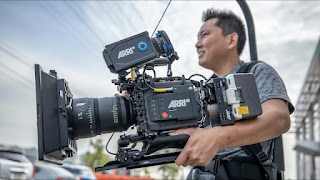genre research: mystery
Mystery Research Blog (Ashley)
• Angles, shots, and movement
o Close ups and extreme close ups show emotion. Emotion comes from the actors eyes, so the closer the camera is to the face, the more emotion is displayed.
o High angle shots are used to make a character feel uncomfortable or out of control
o Low angle shots are used to give a character power, give the feeling that they are on a pedestal or that they are at an advantage.
o Canted angles are slightly slanted or tilted, used to portray madness or unease. They create disorientation for the audience to make them feel connected to the characters.
o Wide shots in mysteries are used to create a feeling of space, to show loneliness or isolation.
o Panning shots can be used to make the audience participate in a search or emphasize a large or small amount of people in a certain setting.
• Mis-En-Scene
o To create a feeling of searching in a mystery film, costumes are made to look worn out, and most likely worn all throughout the whole film to show the dedication to the search. In more classic mysteries, police, detective, and journalist costumes can also be seen.
o Lighting is made to look dim, or eerie. This is to create a feeling of creepiness in the movie watchers. Lighting also depends on the scene, like a desert scene would be bright and not cloudy. A forest scene would be dark, and misty.
o Acting is portrayed as determined, curious, and nervous to give the audience a feeling of supportiveness to the main character.
• Editing
o Editing is used to create booby-trap effects, and shot reverse shots are used to alternate between characters while they are communicating.
o Dissolve transitions are also used in the beginnings to create suspense.
• Sound
o To create a feeling of suspense, diegetic sound is used a lot to create a feeling of sneaking, like stepping on a stick and it breaks.
o Sound motifs can also be used when the protagonist is seen so create fear or dread.
• Elements to use
o Tracking shots, high angles, and over the shoulder shots are good to include, as the create a feeling of being followed, or searching for something.
o Costumes like detective and worn-down clothes make the characters look the part that they are playing while traveling and having no resources in the film.
• Elements to avoid
o Creating cliches in mysteries is easy to do, like the detective that is an alcoholic and serious about their job, the apprentice that wants to learn about being a detective, so they tag along contrary to the detectives wishes, and the police that don’t know who to do their job.
o Sound motifs are almost always used for the protagonist and give a warning to when they will come on screen, ridding it of its mysterious effect.


Comments
Post a Comment